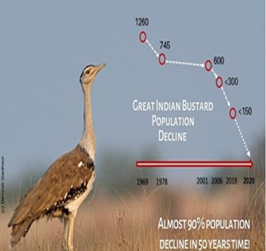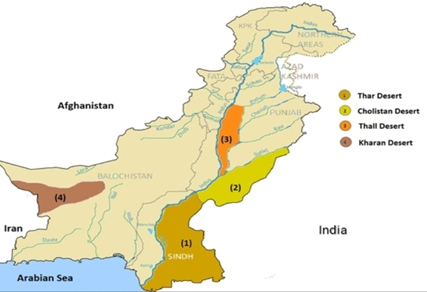

Context
In a recent sighting of three Great Indian Bustards (GIBs) inside the Pakistan’s Cholistan desert has given rise to speculation that the ‘endangered birds’ might have flown across the international border from India’s Desert National Park (DNP) due to loss of habitat for their survival and hunting.
The Great Indian Bustard (GIBs):
- The Great Indian Bustard (Ardeotis nigriceps), is a bustard native to the Indian subcontinent.
- Bustards are large terrestrial birds found in dry grasslands and steppe regions.
- It is also known as the Indian Bustard; it is among the heaviest flying birds in existence.
- It is the State bird of Rajasthan and is considered India’s most critically endangered bird.
- It is considered the flagship grassland species, representing the health of the grassland ecology.
- The GIB is now found in a small number only in western Rajasthan, while Gujarat claims to have a few females left in its Banni Grassland Reserve.
- Population:As per the last count of the GIB in 2018, there were around 127 birds in the Desert National Park or the DNP in Rajasthan.

- Protection Status:
- International Union for Conservation of Nature Red List: Critically Endangered
- Convention on International Trade in Endangered Species of Wild Fauna and Flora (CITES): Appendix I
- Convention on Migratory Species (CMS): Appendix I
- Wildlife (Protection) Act, 1972: Schedule 1

Reasons behind the Migration of GIBs:
- As Rajasthan shares the international borderwith Pakistan’s Sindh and Punjab provinces, it is suspected that the GIBs might have flown across to the neighboring country’s desert.
- The GIBs in the Thar Deserthas been facing threat to their survival because of intensive agricultural practices, lying of power lines, and industrialization.
- Experts have observed that the endangered birds have raised their families within the Desert National Park and outside in the rural pockets, where feed and grassland habitat is available.
- They also move in the crop fields to pick up insects and lizards and like to hide there.

